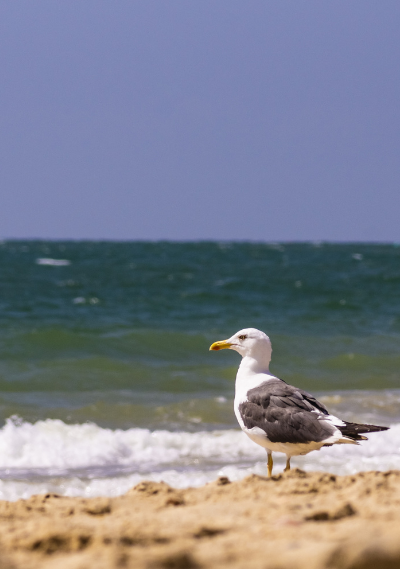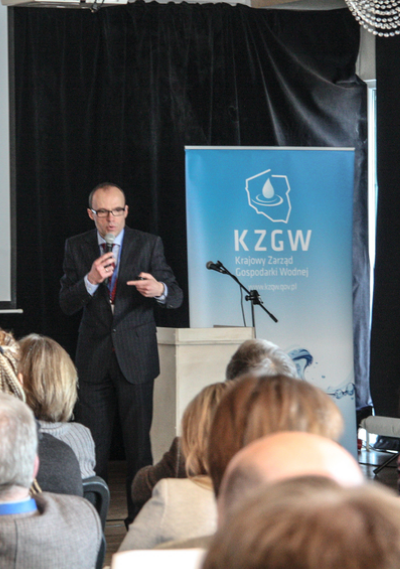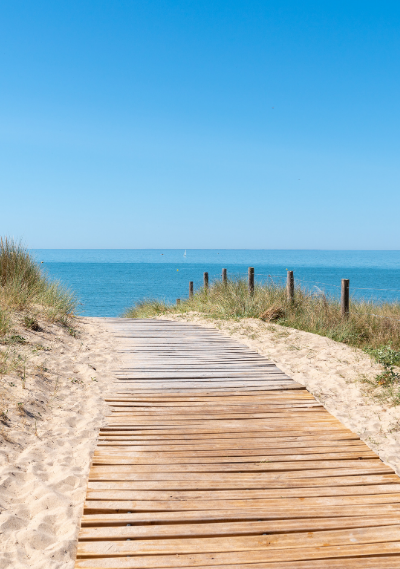















The project entitled “Development of the National Sea Water Protection Program” (KPOWM) was formally completed on April 22 this year. Work on it started on January 22, 2016. During this period, public consultations on the KPOWM project and KPOWM EIA Forecasts were also conducted. The project, commissioned by the National Water Management Authority, was carried out by a consortium of Sweco Consulting Sp. z o.o. (formerly Grontmij Polska Sp.z o.o.) and DHI Polska Sp. z o.o.
Legal basis
The obligation to develop KPOWM comes from the basic document implementing the intersectoral integrated maritime policy of the EU – Directive 2008/56 / EC of the European Parliament and of the Council of 17 June 2008 establishing a framework for Community action in the field of marine environmental policy (RDSM). This directive imposes on the Member States the obligation to take the necessary actions to achieve or maintain good ecological status of the marine environment (GES) by 2020 at the latest. RDSM was implemented into the national legal order mainly through the provisions of the Act of July 18, 2001, Water Law (Journal of Laws of 2015, item 469, as amended), precisely through the amendment of this act in the Act of January 4, 2013 on amending the Act – Water Law and certain other acts (Journal of Laws 2013, item 165). In accordance to the provisions of the Water Law Act, KPOWM is prepared by the President of the National Water Management Authority.
KPOWM is the last planning document required by the directive in the first cycle of implementation of its provisions by Poland and other EU Member States. Therefore, it takes into account the results and conclusions mainly from the preceding studies: Preliminary assessment of the status of marine waters (CIEP, 2014), A set of environmental objectives for marine waters (KZGW, 2015) and the Sea Water Monitoring Program (CIEP, 2015).
Planning works
The analytical work under the project was carried out in accordance with the logic presented below, including the key tools to verify the validity of the effectiveness of the proposed activities and the analysis of existing activities contributing to the achievement of good status of marine waters.
Parallel to the analytical work, in preparation were complete description of the state of the environment and environmental protection issues, necessary for the environmental impact assessment. The final assessment was included in the KPOWM and both documents sumbitted for public consultation.
On March 8-29, 2016, public consultations on the draft National Sea Water Protection Program and the Environmental Impact Assessment of this Program were conducted. On the website www.chronmorze.pl, draft documents were published along with an electronic form, which enables them to be consulted, reviewed, and commented on. In order to allow the widest possible group of stakeholders to participate in public consultations, the documents were also made available in paper form at the headquarters of KZGW and RZGW in Szczecin and Gdańsk. In addition, the documents were also made available at the conference in Sopot, allowing conference participants to submit comments on documents orally or on printed forms. During the entire process of public consultations, about 250 comments were submitted, which were addressed by experts developing KPOWM. Comments were taken into account, partly taken into account or disregarded (in this case justification was provided).
Substantive conclusions from KPOWM
The state of the Baltic Sea is defined by 11 main features. In Poland, the following features were identified as requiring improvement: C1 – Biodiversity, C3 – Commercially exploited species of fish and invertebrates, C5 – Eutrophication, C6 – Seabed integrity, C10 – Waste in the marine environment. Importantly, due to Due to the lack of sufficient monitoring data, two traits were not assessed: C2 – Alien species and C11 – Underwater noise and other energy sources. On the other hand, Polish sea waters were defined as meeting the requirements for the characteristics C4 – trophic chain, C7 – hydrographic conditions, C8 – pollutants and the effects of pollutants and C9 – harmful substances in fish and seafood.
Bearing in mind the specific environmental objectives, a number of existing activities that affect the achievement of the objectives were identified, the activities already planned in other planning documents were inventoried and new legal, administrative, control, economic, educational and technical measures were proposed. These activities, according to their nature and in accordance with the provisions of the Water Law Act, regulate the intensity of human activity, the permitted degree of disturbance in marine ecosystems, the location and dates of implementation of planned projects, contribute to the identification of marine water pollution and restore the previous state of the disturbed elements of marine ecosystems. Economic incentives were also taken into account, encouraging users of marine ecosystems to behave in order to achieve or maintain good environmental status of marine waters, thereby ensuring that all interested parties contribute to achieving good environmental status of marine waters and contribute to increasing public awareness of achieving or maintaining the good environmental status of marine waters. In total, 56 new measures were proposed, the implementation of which was estimated at the cost of approx. PLN 3 billion over the next few years. The specified activities were subjected to a cost-benefit analysis, quantitative and qualitative, to confirm the legitimacy of their implementation. It should be emphasized that many of the proposed activities are interconnected, and therefore synergistic effects can be expected when implementing them. On the other hand, since the features of marine ecosystems highlighted in the document are interrelated in various ways, a significant part of the activities will result in the improvement of not one, but more features.
The set goals for the individual waters distinguished within the Polish sea areas are very ambitious. Due to many conditions, both natural and resulting from a long-term policy in this area, in the case of some reservoirs and features, achieving environmental goals identical to good ecological status by 2020 seems unlikely. In such situations, it was proposed to apply the exceptions provided in the RDSM.
Among the assessed features, GES (Good Environmental Status) will be achieved by 2020 only by Feature 10 – Waste in the marine environment. The remaining ones (C1, C3, C5, C6), taking into account the indicators defined for them, may not reach GES by the deadline specified in the RDSM, i.e. by 2020.
KPOWM recommendations
The general direction, apart from the necessity to implement the measures proposed in both KPOWM and other planning documents, is the intensification of monitoring works that will not only fill the data gap for features 2 – Alien species and 11 – Underwater noise, but will enable a complete and reliable assessment for the next planning cycle, updating the set of goals and possibly making them more realistic in the face of the databases and arguments raised in discussions and consultations. In this respect, it is also important to study the ecological effect and ongoing supervision in order to be able to quantify the implementation of all (not only those resulting from KPOWM) measures aimed at achieving environmental objectives of marine waters. It is here that the need to coordinate actions implemented under other EU directives (especially the Water Framework Directive, the Nitrates Directive, the Wastewater Directive) should be clearly emphasized. It also indicates the need to continue the ongoing projects, studies and pilot programs aimed at deepening the knowledge about the Baltic Sea, and ultimately building a comprehensive database on the environment of marine waters.
It should be emphasized that the trends observed in Poland in recent years are generally favorable, and the successively adopted programs (including the Sea Waters Monitoring Program, the Harbor porpoise protection program, the Common Fisheries Policy, the creation of conservation task plans / protection plans for Natura 2000 areas) and implemented projects (e.g. Pilot implementation of the monitoring of marine species and habitats in 2015-2018 – CIEP) give hope for increasing protection, limiting the negative environmental effects of fishing, and thus a clear improvement of the existing conditions for key groups of marine organisms, including fish, birds , mammals and benthic communities. The implementation of KPOWM and other measures to protect marine waters will intensify this growing trend, so that in the coming years it is possible to indicate new Environmental Features of Good Condition (GES).
What’s next for the KPOWM project?
After the completion of the project, the President of the National Water Management Authority will submit the draft KPOWM to the minister responsible for water management for arrangement with members of the Council of Ministers. Then, within 3 months from the date of agreement, the draft is submitted to the European Commission and interested EU Member States. If, within 6 months from the date of submission of the draft, the European Commission does not reject the draft KPOWM in whole or in part, it is adopted by a regulation of the Council of Ministers. Rejection of the KPOWM project by the European Commission results in the the need to amend the project; rejection in full results in the obligation to develop a new KPOWM.
KPOWM update and the next RDSM planning cycle
Like other elements of the Marine Strategy, the KPOWM is reviewed every 6 years and, if necessary, updated (in the same manner as it was adopted). The minister responsible for water management should inform the European Commission, the Baltic Sea Environment Protection Commission and the interested European Union Member States of the update within three months of its adoption, after obtaining the consent of the Council of Ministers. Within three years from the adoption of the KPOWM and after each update, the minister responsible for water management submits a progress report on its implementation to the European Commission.












